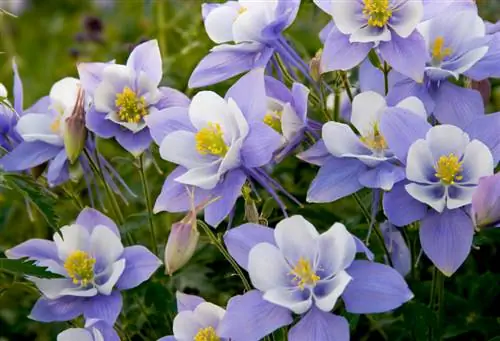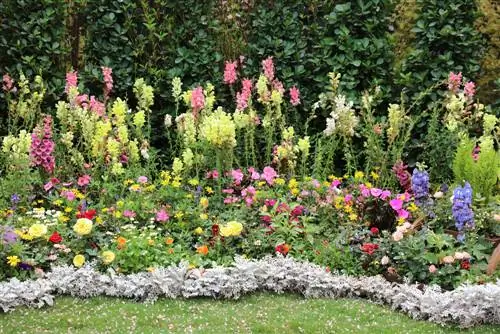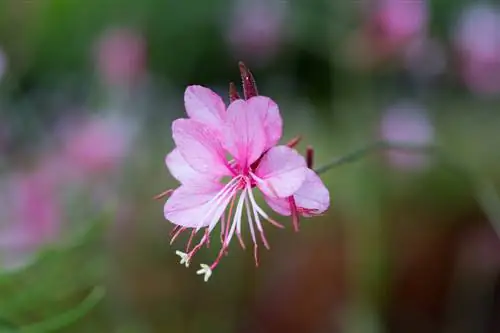- Author admin [email protected].
- Public 2023-12-16 16:46.
- Last modified 2025-06-01 06:02.
The ranunculus tuber sits in the ground. Its job is to store nutrients and use all its strength to produce shoots, leaves and flowers. But does it sprout again every year? What should you pay attention to if you want to cultivate ranunculus for several years?

Can ranunculus be cultivated perennial?
Ranunculus can be cultivated for several years by protecting it from severe frost, watering it properly and fertilizing it. Overwintering the tuber in a cool, dry place is recommended for cold-sensitive varieties. Propagation is possible by separating breeding tubers.
Ranunculus can be perennial
In the trade, ranunculus are often labeled as 'perennial'. But they are only conditionally so. Basically, they are designed to live for several years. However, if they are outdoors, for example in a garden bed or even in a pot on the balcony, and there is severe frost, it is likely that the plant will freeze.
Most varieties, although they prefer cooler temperatures, are only hardy down to -3 °C. A few exceptional specimens can still tolerate frost down to -10 °C. In order to cultivate ranunculus for several years, you should protect this plant over the winter.
Suitable winter protection - what does it look like?
Ranunculus that are frost-tolerant and in a mild location can be protected over the winter. If you cut the plant down in the fall, place a layer of brushwood or compost over the root area toward the end of October. This position protects the survival organ of the ranunculus.
Some specimens prefer to overwinter
Varieties that have poor frost tolerance should be overwintered. This also applies if your ranunculus is in a rough location, was recently planted or is facing a hard winter. This is how the plant is overwintered:
- dig up the tuber in autumn
- Clean the tuber from soil residue
- Place the tuber in a cool, dry and dark place
- well-suited wintering quarters: basement, attic, garage
Water and fertilize the plant correctly
The care of ranunculus plays a significant role in their longevity. If nutrients and water are missing, the plant will soon lose out. It needs plenty of nutrients to supply its leaves and flowers. Therefore, fertilize your ranunculus in spring and during the flowering period at intervals of 2 weeks.
Watering is crucial, especially during flowering. The soil should always be kept moist. But be careful not to cause waterlogging! This quickly leads to the tuber rotting. The plant would die.
After the flowering period, the ranunculus is fertilized more sparingly until the leaves turn yellow. Watering is reduced so that the tuber interprets this as a signal to stop sprouting and to slowly go to rest.
Use brood tubers
Even if a ranunculus is no longer the he althiest and seems very wasted, you can preserve the properties of this plant by separating its breeding bulbs and planting them in a separate place. This makes it easy and quick to propagate the plant.
Tip
Protection against diseases (especially powdery mildew) and pests is also important so that the ranunculus can stay he althy and happy for many years.






